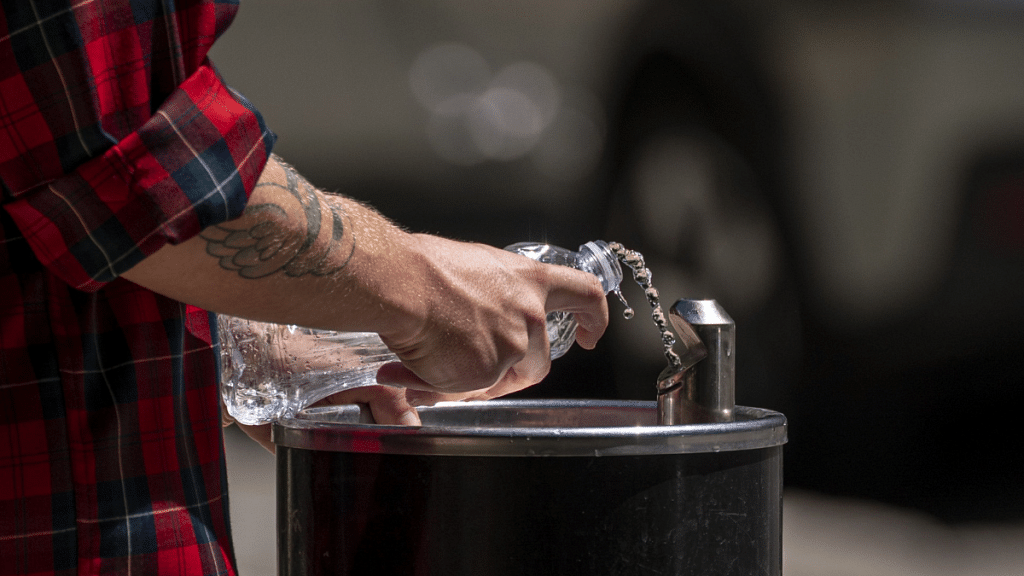I often hear people say that water comes from God and so, like air and sunlight, it shouldn’t have a price. This is a big misconception.
Taps, toilets and soaps are human inventions. The systems that deliver a supply of potable water, or carry waste away from a latrine, are costly, complicated and require constant maintenance.
Yes, it is our human right (another human invention) to access sufficient water and sanitation for basic personal and domestic needs. And yes, governments must guarantee these rights for every single person. But these services cost money to establish and run, and those resources need to come from somewhere.
Water doesn’t have to be free for everyone
Just because water is a human right doesn’t mean it has to be free for everyone, regardless of their ability to pay. What the human right to water and sanitation requires is rather that these services are affordable for all, meaning that they must not compromise the ability to pay for other essential needs such as health or food or housing.
Worldwide today, there are still 2 billion people without safely managed drinking water and 3.6 billion without a safely managed toilet. Reaching all of these people means that progress must quadruple if we are to reach our goal of universal access to water and sanitation by 2030. In fact, if current trends persist, billions of children and families will be left without critical, life-saving WASH services.
Governments are under an obligation to provide water and sanitation to all at a fair price, depending on their ability to pay. Providing water and sanitation free of charge for everyone would deprive governments and service providers of these precious resources and the revenue needed to maintain, expand and upgrade these services, which in turn would fail to create an investment-friendly ‘enabling environment’ that we need to drive rapid progress.
Also read: Water storage levels low in major states, likely to hit food production and push inflation
However, what is currently happening is that rich homes often have subsidized piped water at relatively low prices, while those living in slums are not even connected to the official network, meaning that they often have no choice but to purchase water from tanker trucks or street vendors, spending up to 100 times more for water of unverifiable quality and safety. These subsidies divert precious resources that could and should be used to support the most marginalized and vulnerable people in society.
The situation is both morally unacceptable and entirely counterproductive to sustainable development.
The opportunity of investing in water & sanitation systems
Investing in water and sanitation systems so that everyone has safe, reliable, affordable services is the definition of a no-brainer. A recent study shows that access to toilets with safely managed sanitation could yield up to $86 billion per year in greater productivity and reduced health costs; basic hygiene facilities could mean an extra $45 billion per year; and taps in the home could equate to an annual return of $37 billion globally.
Access to water and sanitation is also the first line of defense in protection against infectious diseases, such as COVID-19 and handwashing with soap decreases the likelihood of a COVID infection by 36%.
Investing in water and sanitation systems is also a massive opportunity to serve a huge and rapidly expanding market. Poor communities may have limited funds but they don’t expect something for nothing. Time and again, all over the world, communities are demanding their rights and demonstrating their willingness and ability to pay a reasonable price.
Also read: 32% backward districts, 30% encephalitis-hit districts now have tap water under Nal Se Jal
How to deliver water & sanitation so that it reaches everybody
We need strong political will so that governments can connect people living in slums and informal settlements to the formal grid. Next, governments should implement fair tariff structures that charge higher-income households and agricultural or industrial users more for water and sanitation to generate the necessary revenue to bring fairly priced and affordable services to those most in need.
Those who can afford to, must pay a reasonable and fair price of access. But for people who cannot pay for reasons beyond their control, they can and should be free. Unless we respect the value of water and sanitation, we run the risk of never having enough resources to roll it out to everyone in the world.
Taps, toilets and the systems behind them are truly some of the greatest achievements in history. They are the fruits of science, political commitment and huge, sustained financial investment. Ensuring water and sanitation for all, everywhere, always will be transformational. The alternative is not an option.
Catarina de Albuquerque, CEO, Sanitation and Water for All
This article was originally published in the World Economic Forum. You can read it here.
Also read: After rural homes, govt now plans mega scheme to extend tap water facility to urban homes
